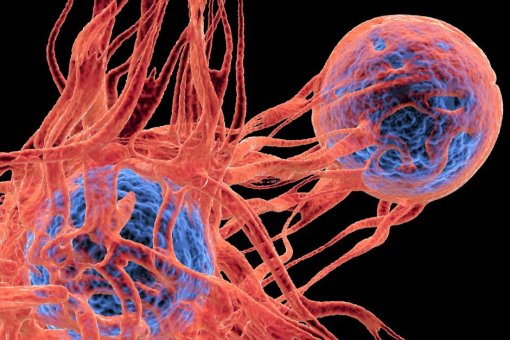Images
Participants

Contact

Around 160 scientists, brought together by IRB Barcelona and the BBVA Foundation in a Barcelona Biomed Conference, are discussing the latest research into one of the hallmarks of Alzheimer’s disease, the amyloid-beta protein that is the major component of the plaques that are characteristic of this debilitating disorder.
According to data from Alzheimer's Disease International in 2013, an estimated 135 million people worldwide will be suffering from dementia in 2050, Alzheimer’s disease being the most prevalent. This condition currently affects over 40 million people but is very strongly age-related, giving rise to the prospect of a ‘21st century plague’ affecting the aging populations across the globe.
A recent report from the Cleveland Clinic published in July 3, indicates that 99.6% of the clinical trials for Alzheimer´s disease have failed, with the result that much of the pharmaceutical industry is discouraged and uncertain as to how to proceed. The scientific community, however, is making substantial progress in understand the underlying causes of the disease, an essential factor in the rational design of innovative therapeutic strategies.
At present, Alzheimer’s disease (AD) cannot be prevented, it is typically diagnosed only at an advances stage, and there is currently no drug on the market that can slow its progression. According to a study presented last Thursday, 99.6% of the clinical trials for AD have failed, thereby discouraging much of the pharmaceutical industry from further investment. However, scientists have made major advances in recent years about the origins of Alzheimer’s disease and are optimistic that further and more intensive research will enable rational therapeutic strategies to be developed.
“We are facing an epidemic that can be compared in its effect to the plagues that have affected mankind throughout history. As with previous plagues, we shall only overcome its devastating effects by discovering the agents responsible for its origins and progression. Investment in both fundamental and applied research is the only way to ensure that solutions are found. If investment is increased to levels comparable to that of cancer – at the present time funding for cancer research is ten times greater than that into Alzheimer´s disease - we are confident that the effects on the development of effective treatment will be dramatic,” say the scientists Christopher Dobson, from the University of Cambridge, and Natàlia Carulla, from the Institute for Research in Biomedicine (IRB Barcelona), co-organisers of the Barcelona Biomed Conference run by IRB Barcelona with the support of the BBVA Foundation.
In a press conference held today, accompanied by the neurologist and researcher Teresa Gómez-Isla, from the Massachusetts General Hospital, the three scientists have described the threat posed by AD and some of the most promising lines of current investigation. A common objective shared by the participants in this IRB Barcelona conference is to ensure that clinicians have access to reliable diagnostic tests that allow the early detection of AD, and that also facilitate the effective clinical trials of novel forms of therapeutic molecules that slow down and cure the disease.
AD is a progressive neurodegenerative disorder that robs us of our most human qualities: memory, language, emotional control and the capacity to reason and take logical decisions. Today this disease affects 44 million people worldwide. According to data from the Spanish Society of Neurology, 600,000 people are affected by Alzheimer’s disease in Spain (about 112,000 in Catalonia according to data from the Generalitat de Catalunya); however, this disease affects the daily lives of 3.5 million people in this country, notably those who act as carers of those suffering from this dreadful condition. Ageing is one the dominant risk factor, and as life expectancy increases the number of people affected by AD is expected to increase dramatically and progressively in the coming decades.
A report published in 2013 by Alzheimer's Disease International, a worldwide federation that brings together all national associations, estimated that there will be 135 million cases of dementia by 2050. AD is by far the most common of these conditions, and it is rapidly becoming one of the greatest challenges to the health systems and the social stability in many parts of the world.
Amyloid-beta aggregates: the focus of research in Alzheimer’s disease
One of the hallmarks of AD is the aggregation of the amyloid-beta protein, a process that results in the formation of plaques, which are observed in the brains of those affected by this disease. These plaques comprise fibrillar aggregates of the amyloid-beta protein, known as amyloid fibrils.
Given this observation, scientists initially proposed that amyloid fibrils were likely to be the causative agents of the disease. Later, however it was observed that there was only a relatively weak correlation between the levels of amyloid plaques and the severity of the dementia. These findings led to new hypotheses that much smaller aggregates, formed before the development of the fibrils, are responsible for the neurodegenerative process. “What remains to be determined is which of the multitude of aggregates formed by the amyloid-beta protein are the most toxic and how they exert such toxicity. This knowledge gap is one of the reasons why clinical trials to stop the progression of the disease have so far failed,” explains Dr Carulla.
One of the obstacles that scientists have strived to overcome in the last ten years to was the absence of effective methods that allow the study of this aggregation process. “It is an extremely heterogeneous and dynamic process, and we have had to start virtually from scratch as most scientists interested in biological phenomena had not recognised the significance of protein aggregation until it was clear that it is fundamental to disorders such as Alzheimer´s disease,” explains Dr Dobson.
From his laboratory in Cambridge, the research group run by this renowned British researcher and scientific figure, along with colleagues and collaborators from Cambridge and indeed elsewhere – many of whom are speaking at this meeting - has made crucial contributions to the study of protein aggregation and applied these to amyloid-beta and its role in Alzheimer’s disease.
And Dr Carulla, working in Barcelona, has made major contributions to the detailed nature of the species responsible for the disease. “In the context of the importance of small aggregates in disease, and with novel procedures and methodologies in hand, my research at IRB is obtaining results that demonstrate that certain structural patterns of amyloid-beta aggregates are responsible for neuronal death,” states Dr Carulla. The study performed by Dr Carulla’s group, funded partially by the Alzheimer’s Association of the US and that will be published soon, will pave the way for future studies as to how this kind of aggregate acts on neurons and hence provide vital information to stimulate the search for novel therapeutic molecules that can prevent its development or elicit its breakdown and/or removal.
Biomarkers for early diagnosis
On her part, Dr Teresa Gómez-Isla highlights “the urgent need to be able to diagnose the disease when it still hasn’t presented symptoms or caused irreversible brain damage if we want to increase the possibilities of beating it. We know that amyloid plaques begin to accumulate in the brain 15 years before the first symptoms appear. So it is possible that the failure of clinical assays is due in part to the fact that we are arriving too late”. Part of the research undertaken by Dr Gómez-Isla focuses on the validation of neuroimaging biomarkers to address this purpose.
“For several years now we have had access to imaging markers that allow us to see the amyloid plaques in vivo, and the first preventive clinical assay has been launched with an anti-amyloid drug in asymptotic elderly people that have amyloid in their brains. This assay will allow us to clarify whether this treatment is useful to prevent the onset of dementia.” “Very recently the first imaging markers have been developed for the tau protein, whose validation we are working on. These markers that could be valuable for the early detection of the disease and the design of preventive trials.” “Recent studies indicate that, in AD, the altered soluble forms of the tau protein spread from some neurons to others, contaminating them and slowly damaging many regions of the brain. This discovery is highly relevant because it points to a potential new therapeutic target other than the amyloid and opens up the opportunity to develop novel drugs aimed at inhibiting this process,” explains Dr Gómez-Isla.
A third of the conference will be devoted to therapeutic strategies. The speakers include Dr. Boada, medical director of the Fundación ACE and head of the clinical service of the Hospital de la Vall d’Hebron de Barcelona. Dr. Boada has headed a clinical study using a product developed by the pharmaceutical company Grífols for the treatment of AD and involving 350 patients. The AMBAR study (“Alzheimer Management By Amyloid Removal”) tested the combined treatment of therapeutic plasmapheresis with human albumin to remove amyloid-beta aggregates from the blood of patients.
From today and until Friday 11 July, the conference “Amyloid-β and Alzheimer’s Disease: From Fundamental Principles to Therapeutic Strategies” is hosting 24 international speakers and around 160 participants who work in basic research, clinical practice and pharmaceutical companies. All their labs are devoted to studying amyloid-beta protein, the primary objective of the vast majority of research conducted into Alzheimer’s disease worldwide. The conference is being held at the Institut d’Estudis Catalans, in Barcelona, which has hosted the Barcelona Biomed Conferences since 2006. The event opened today is the 24th in the Barcelona Biomed Conference series.
BRIEF SUMMARY OF THE PARTICIPANTS IN THE PRESS CONFERENCE
Christopher Dobson (University of Cambridge, Great Britain)
Dr. CHRISTOPHER DOBSON is the John Humphrey Plummer Professor of Chemical and Structural Biology at the University of Cambridge. He is a Fellow of the Royal Society and of the Academy of Medical Sciences and a Foreign Associate of the US National Academy of Sciences. He has received numerous awards for his research into the nature of protein misfolding and its links to disease including both the Davy and Royal Medals of the Royal Society, the Heineken Prize for Biochemistry and Biophysics from the Royal Netherlands Academy of Arts and Sciences, and the Feltrinelli International Prize for Medicine from the Accademia Nazionale dei Lincei in Rome. His work provides a fundamentally new view of the origins and means of progression of many of the most debilitating and increasingly prevalent ‘plagues’ of the modern era, such as Alzheimer’s disease and Parkinson's disease.
Natàlia Carulla (Institute for Research in Biomedicine, Barcelona)
Dr. NATÀLIA CARULLA received a degree in Chemistry from the University of Barcelona. Afterwards, she went on to do her PhD at the University of Minnesota and a post-doctoral stage in the laboratory of Prof. Christopher Dobson. She is an associate researcher at the Peptides and Proteins Lab, where she undertakes an independent line of research. For the last five years her work has focused on the study of amyloid-beta aggregation associated with Alzheimer’s disease and particularly into the nature of the toxic structures of the amyloid-beta protein. She holds a “Ramón y Cajal” researcher post and runs a project funded by the Alzheimer's Association of the United States.
Teresa Gómez-Isla (Massachusetts General Hospital, Boston, US)
Dr. TERESA GÓMEZ-ISLA is a neurologist and researcher and she completed her training in dementia at the Massachusetts General Hospital. She has headed the Memory Units at the University of Navarra and the Hospital Sant Pau, in Barcelona. She currently works at the Massachusetts General Hospital where she co-directs the Memory Unit and heads a lab devoted to Alzheimer’s disease. Her research focuses on unveiling the changes that occur in the brain prior to the appearance of the symptoms and on validating biomarkers that allow early diagnosis of the disease and intervention. She has set up a multi-centre project in the US devoted to studying the brains of individuals that appear to be resistant to Alzheimer’s disease and that could provide clues for the design of neuroprotective treatments.
About IRB Barcelona
The Institute for Research in Biomedicine (IRB Barcelona) pursues a society free of disease. To this end, it conducts multidisciplinary research of excellence to cure cancer and other diseases linked to ageing. It establishes technology transfer agreements with the pharmaceutical industry and major hospitals to bring research results closer to society, and organises a range of science outreach activities to engage the public in an open dialogue. IRB Barcelona is an international centre that hosts 400 researchers and more than 30 nationalities. Recognised as a Severo Ochoa Centre of Excellence since 2011, IRB Barcelona is a CERCA centre and member of the Barcelona Institute of Science and Technology (BIST).











